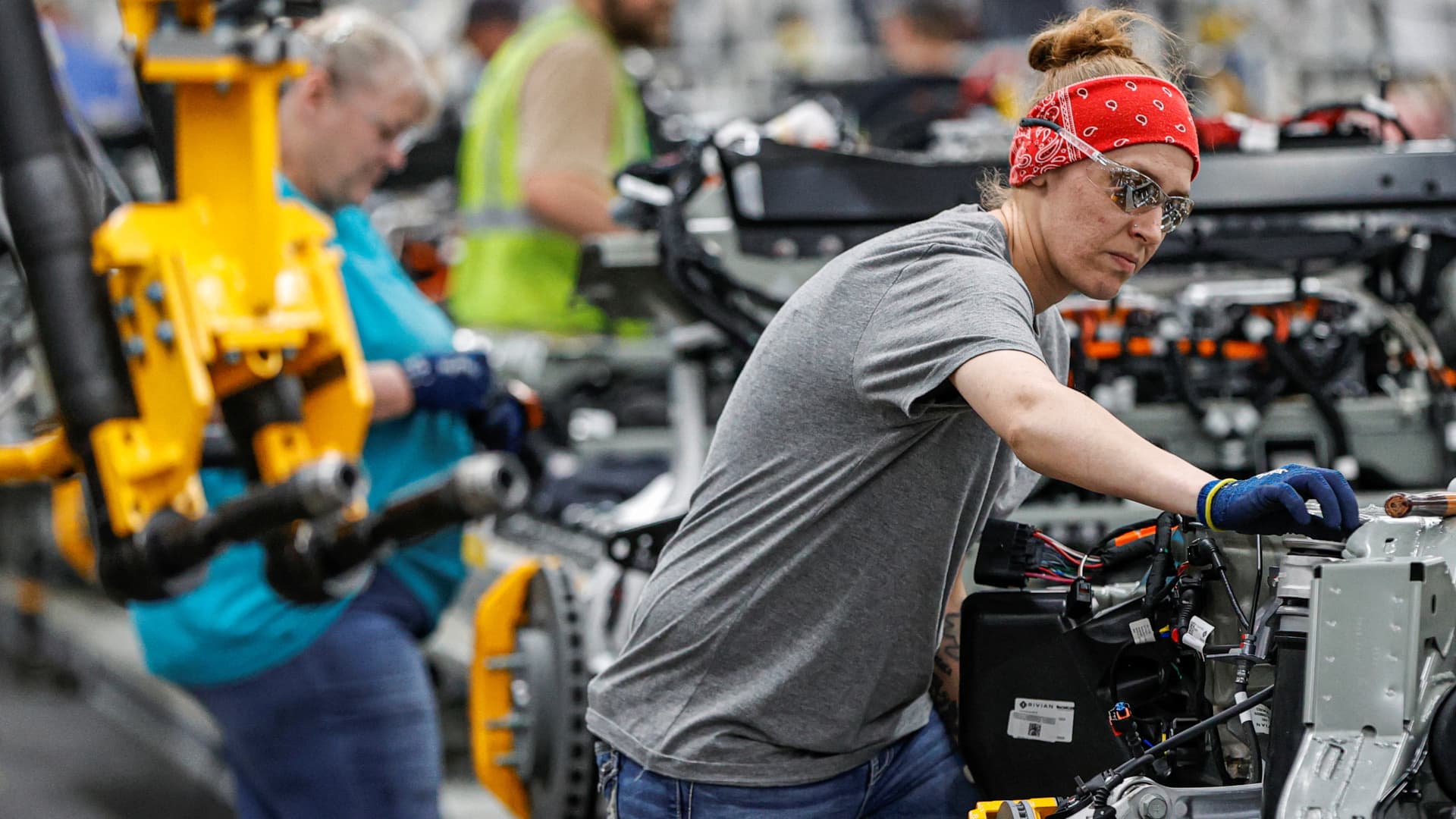The economy is expected to have added another 400,000 jobs in April, reflecting a very tight labor market, but economists say the number of new hires could start to slow from here.
A slowdown might be welcome in light of fears that the labor market has become too hot and will only drive inflation higher — and corporate profits potentially lower — if wages keep rising. Recent government data show the labor shortage worsening, with the gap between job openings and available workers at a record 5.6 million in March.
“The labor market continues to barrel along. We need it, at this point in time, to slow down a bit because we’re going to blow past full employment and inflation is going to become a bigger problem than it already is,” said Mark Zandi, chief economist at Moody’s Analytics. “Ultimately, we need to get to something that’s closer to no more than 100,000 a month.”
According to Dow Jones, the unemployment rate is expected to fall to 3.5% in April, down from 3.6% in March. The April employment report is released at 8:30 a.m. ET Friday.
Economists surveyed by Dow Jones expect employers added 400,000 jobs to nonfarm payrolls, down slightly from 431,000 in March. If payrolls reach the forecast level, it would be eleventh month in a row of job creation at 400,000 or better.
Wages are expected to grow at a pace of 0.4%, or 5.5% on a year-over-year basis, the same pace as the month earlier.
In a turbulent financial market focused on the pace of inflation, the wage component of the report is likely to be the most important factor.
Markets were rattled Thursday after the Bureau of Labor Statistics reported that unit labor costs jumped 11.6% in the first quarter as productivity slumped. That reflects a 3.2% increase in hourly compensation on top of a 7.2% drop in productivity and was the largest four-quarter increase in unit labor costs since 1982. The productivity decline was the steepest in 75 years.
“I don’t think they want to see an upside surprise in wages, particularly on the heels of the labor costs number being at a 40-year high,” said Peter Boockvar, chief investment officer of Bleakley Global Advisors. “I think there’s a sense that even if [April’s] number is really good, growth is beginning to slow and we know that jobs data is a lagging indicator…If it’s weaker, we could say there’s not enough workers. I think it’s the wage number that people are going to focus on most, and it goes to the whole wage spiral debate.”
Zandi said he does not believe wages are yet driving inflation but if the labor market does not cool, that could happen. “Inflation is 8%. Wage growth is 5%. You don’t want to see that for very long,” he said. “We’ll start to see inflation come in and fall below wage growth as we get into next year…It’s fair to say inflation is driving wages. Wages are not driving inflation, at least not yet.”
If that were to happen, that’s when you get the “dreaded wage price spiral,” said Zandi. At that point, the Federal Reserve would have to get even more aggressive with its rate hikes.
“Recession risks become even greater then,” he said. “You don’t want a boom bust economy. You want a steady as she goes economy that’s operating at full tilt. That’s what the Fed is striving for.”
Diane Swonk, chief economist at Grant Thornton, said the churn in the job market is one of the factors hurting productivity.
“You want a more balanced situation where wages are outpacing inflation because workers are more productive, but that’s not where we’re at today,” said Swonk. “Where we’re at today is eroding living standards and that’s important.”
Swonk said there are 1.9 job openings for every worker, up from 1.2 openings prior to the pandemic.
“That’s why the Fed has put the labor market in their crosshairs and talked about reducing demand, but it’s hard to see how we get from 1.9 to 1.2 job openings per worker,” said Swonk. “It’s hard to see that happening without hammering demand and increasing supply.”
Fed Chairman Jerome Powell commented numerous times on the tightness in the labor market at his briefing Wednesday, following the Fed’s half-point interest rate hike.
“If wages and jobs are strong in the first quarter, but growth goes down that means unit labor costs go up,” said Jim Caron, head of macro strategies for global fixed income at Morgan Stanley Investment Management. “What that starts to show is wage inflation which is what Powell was talking about yesterday.”
After the productivity and labor cost data were released Thursday morning, bond yields rocketed higher. The 10-year yield Treasury yield was up about 9 basis points from Wednesday, at 3.05% in afternoon trading Thursday. A basis point equals 0.01%. The S&P 500 was down 3.6%.
